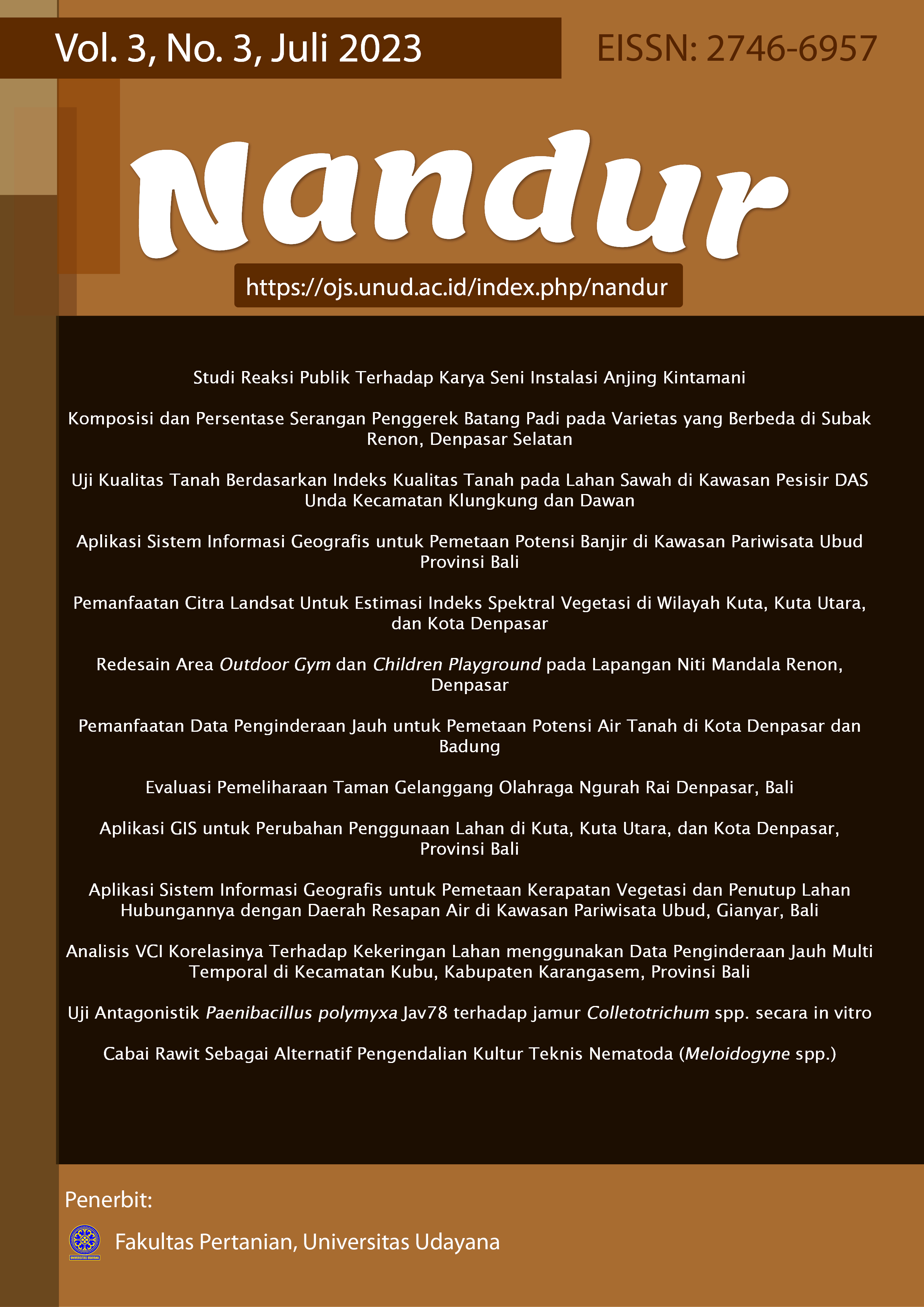Studi Reaksi Publik Terhadap Karya Seni Instalasi Anjing Kintamani
Abstract
This study have a goals to analyze the opinion of the social media users about ‘’Anjing Kintamani’’ installation artwork, also to know more about the awareness of environment situation now days. The ‘’Anjing Kintamani’’ installation artwork has a message of shape, element of arts and shape of sign, which is analyze by semiotica theory from Pierce. Pierce (2017) explained the meaning of sign is to put forward of something. What is the sign put forward, what are they refers to, and what the sign show on, that he said it as a object. Pierce also do a sign classification that he compare with the ground such as qualisign, sinsign, and legisign. Qualisign is a sign quality. Sinsign is a things actual existence or it’s story. Legisign is a norm that contained by the sign. This theory is used to analyze the response of social media users about ‘’Anjing Kintamani’’ installation artwork, symbolized by sign of the social media user comments to ‘’Anjing Kintamani’’ installation artwork. The study is using descriptive method with qualitative research type, any method of collecting the data is applied to gain accurate datas. With Pierce thought, the result of this study find any response of Instagram users, also Facebook users. Sosial media responses include “likes” and comments on installation artwork are analysed using the semiotic theory of signs.
References
Badriya, Y. (2016). “30 Pengertian Seni Menurut Para Ahli”. https://ilmuseni.com/dasar-seni/pengertian-seni-menurut-para-ahli/amp. (Diakses pada 13 Oktober 2019)
Broadbent, G. (1995). Design in Architecture.
Hardiman, F. B. (2009). Demokrasi Deliberatif: Menimbang Negara Hukum dan Ruang Publik dalam Teori Diskursus Jurgen Habermas (Yogyakarta: Kanisius, 2009), 137.
Hakim, R. (1987). Komponen Perencanaan Arsitektur Lanskap. Jakarta.
Indarto, K. (2016). Mengartikulasikan Ruang Publik dan Karya Seni. Tersedia online pada: http://webcache.googleusercontent.com/search?q=cache:http://tby.jogjaprov.go.id/assets/uploadsck/files/MAJE%2520edisi%25201%2520%25202016.pdf (Diakses 10 Oktober 2019).
Kurniawan. (2001). Semiologi Roland Barthes. Magelang: Yayasan Indonesia Tera.
Munandar, U. (1988). Kreativitas Sepanjang Masa. Jakarta: Muliasari.
Munandar, U. (2009). Pengembangan Kreativitas Anak Berbakat. Jakarta: Rineka Cipta.
Reza A. A. (2010). “Ruang Publik dan Peran Para Penyair Menurut Richard Rorty,” dalam Ruang Publik: Melacak Partisipasi Demokratis dari Polis sampai Cyberspace, Editor F. Budi Hardiman (Yogyakarta: Kanisius, 2010), 241 & 242.
Rosenthal, M. (2002). Understanding Installation Art: From Duchamp to Holzer. Munich: Prestel.
Sobour, A. (2016). Semiotika Komunikasi. Bandung: Remaja Rosdakarya.
Stephen, C. et al. (1992). Public Space. Cambridge: Cambridge University Press.
Zoest, A. V. (1992). Serba-Serbi Semiotika. Jakarta: PT Gramedia Pustaka Utama.



